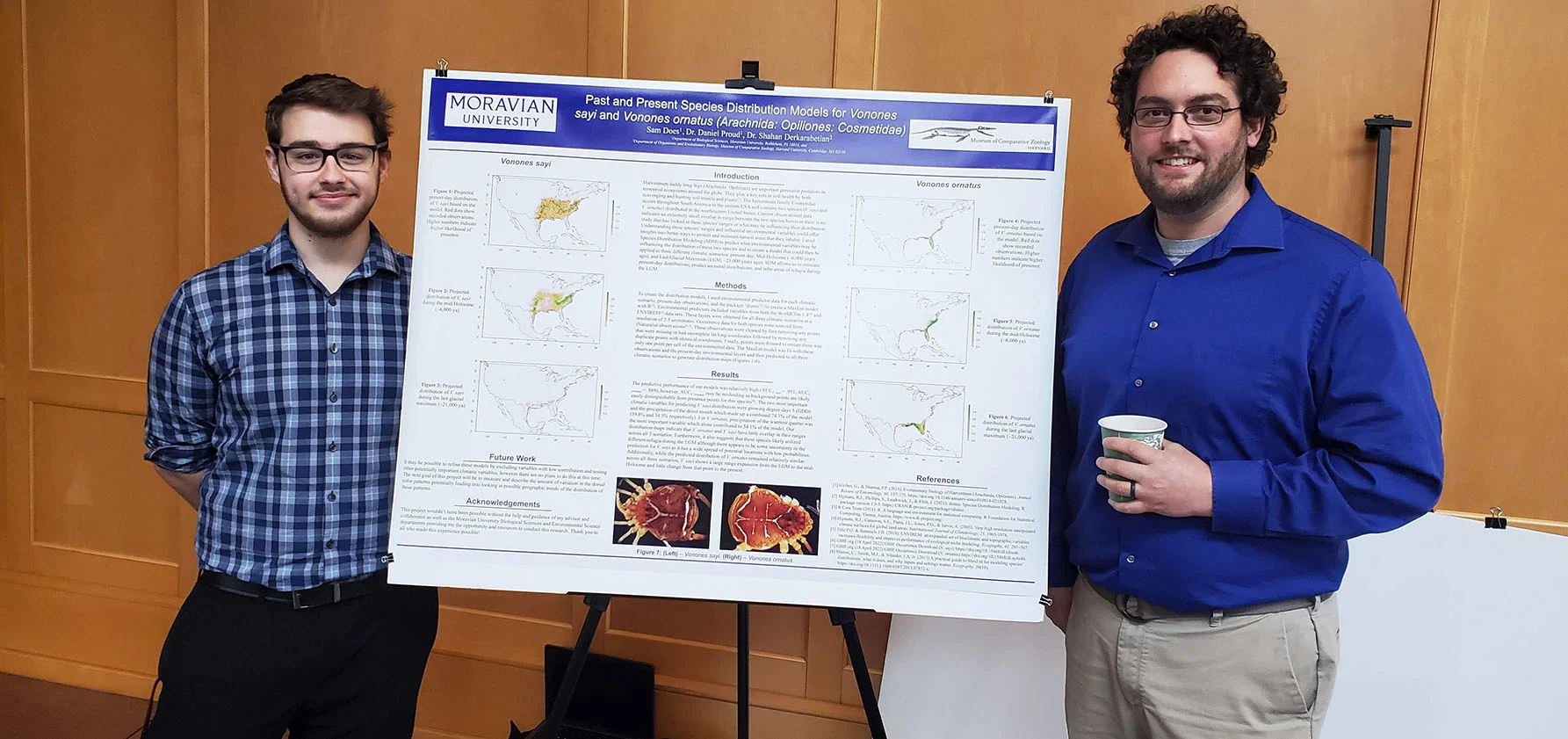
Think about the last time you saw a daddy long-legs. Did you scream? Say, “ew?” Squish it? Or maybe if you know more about these unusual creatures, you paid it some respect. Daddy long-legs, also known as harvestmen, have ancestors dating back 400 million years. And although they may not be the cutest, these arachnids can offer important clues about evolution, migration, and climate change. Research on harvestmen done by Samuel Does ’22 and Moravian University Assistant Professor of Biology Daniel Proud was recently presented at the American Arachnological Society annual meeting held June 26–30 at the University of California Davis.
“The study, titled, ‘Predicting Past Distributions of Libitioides sayi L. ornata (Arachnida: Opiliones: Cosmetidae) Using iNaturalist Occurrence Data,’ is part of a larger study in which we are using an integrative approach to understand the biology of the two species of harvestmen in the family Cosmetidae that occur in Southeastern USA,” Proud explains.
In the world of arachnological research, presenting at the annual meeting is meaningful. “The American Arachnological Society annual meeting is a fantastic venue for undergraduate and graduate students to present their work at a national conference in diverse fields of arachnology that include ecology and behavior, evolution, systematics, biogeography, conservation, functional morphology, and more,” Proud says.
In their research, Proud, Does, and their co-author Shahan Derkarabetian, postdoctoral fellow at the Museum of Comparative Zoology at Harvard University, found that two species of harvestmen, despite being so closely related, utilize very different habitats. “This is a difference that may have come from thousands of years of potential separation where they slowly adapted to the different environments they were in,” says Does, who is presently pursuing a master of science degree in biology at East Stroudsburg University.
The researchers also looked at harvestmen’s complex dorsal patterns and the role they play in the environment. “For example, there is one daddy long-leg species in Costa Rica that is green because its body is covered by cyanobacterium,” Proud says. “We hypothesize that it helps camouflage them, but no one has empirically tested that hypothesis. With respect to Sam’s work, it shows how we can utilize citizen data to better understand distribution of these species and their habitat requirements.”
To gather their data, the scientists used occurrence data from iNaturalist (a joint initiative between the California Academy of Sciences and National Geographic to create a social network where scientists can share their observations) combined with environmental data to build models that estimate the ecological niche of the species. These models helped the researchers estimate where the species may have lived in the past; for example, during the last glacial period more than 21,000 years ago.
As he conducted this research, Does says he developed not only a deeper understanding of harvestmen but a love of the investigative process. “I enjoyed working with programs like R and ArcMap to create these powerful models and predictions,” he says. “To me, this species and project presented a puzzle we could try to solve using a method I am eager to continue to work with.”
Professor Proud, Does, and Derkarabetian are aiming to publish their work in a peer-reviewed journal later this year.